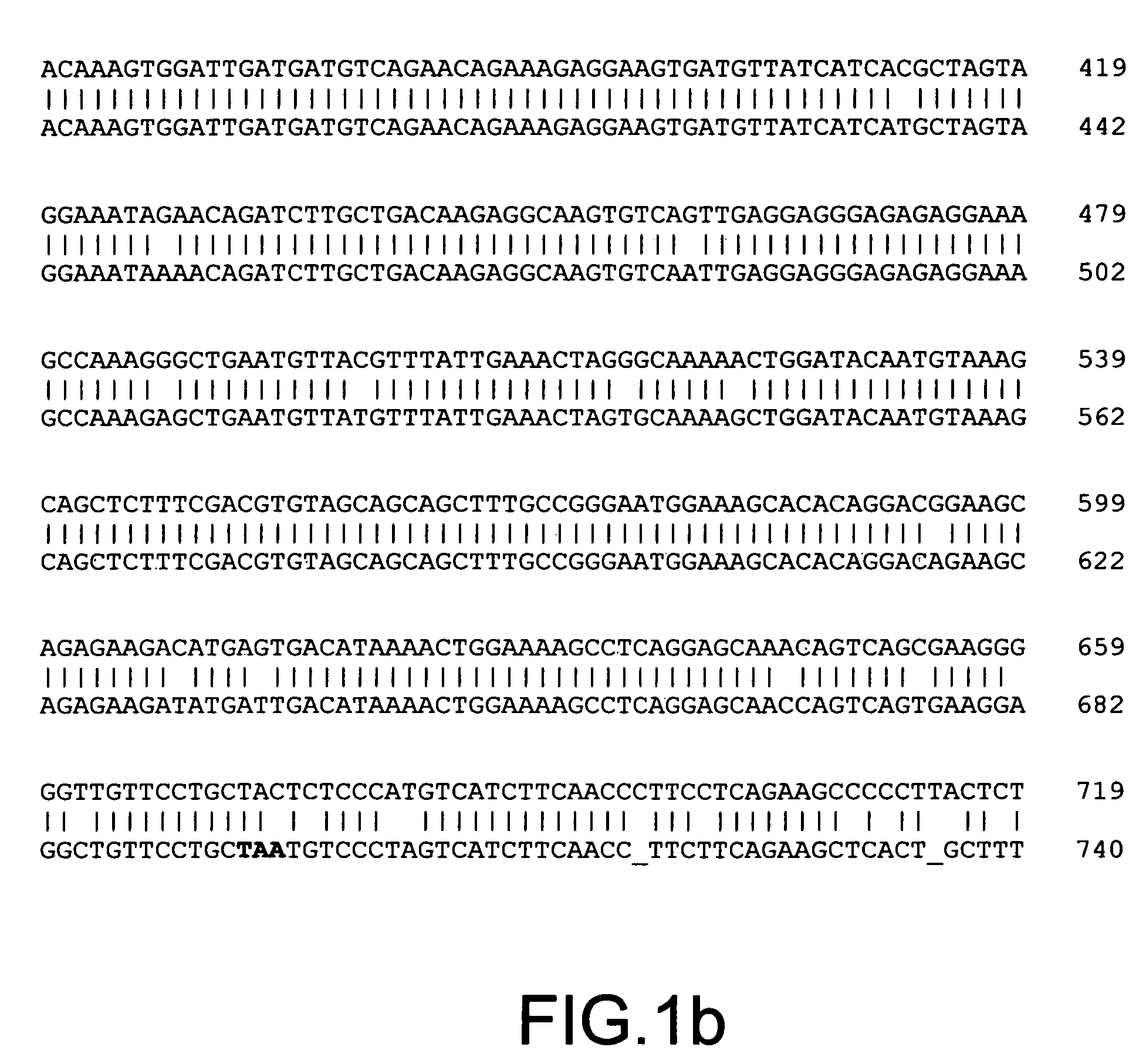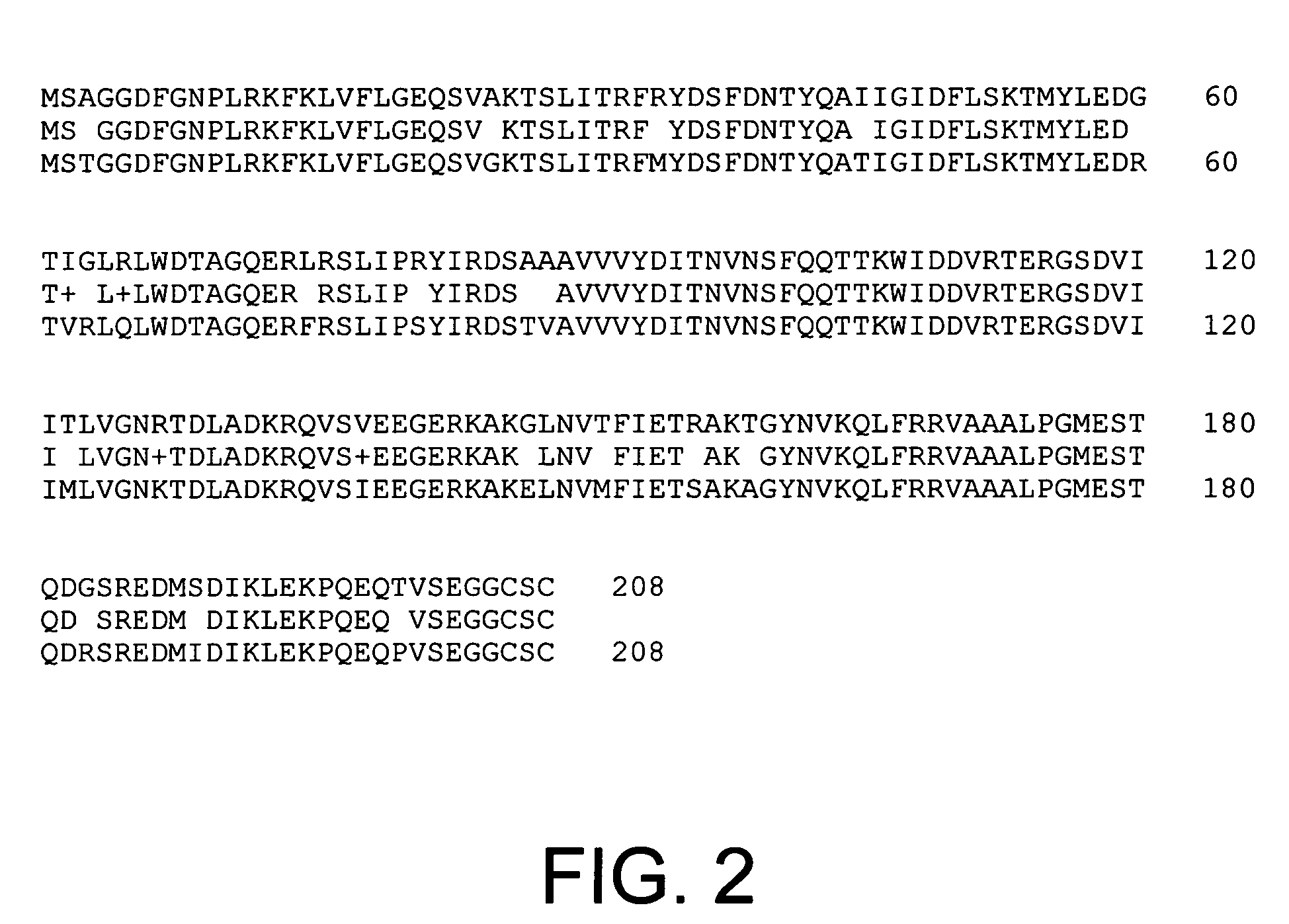Identification of differentially methylated multiple drug resistance loci
a technology of multiple drug resistance and loci, which is applied in the field of identification of differentially methylated multiple drug resistance loci, can solve the problems of a large obstacle of multiple drug resistance (mdr) to a broad spectrum of chemotherapeutic agents, and achieve the effect of increasing the drug sensitivity of mdr cells
- Summary
- Abstract
- Description
- Claims
- Application Information
AI Technical Summary
Benefits of technology
Problems solved by technology
Method used
Image
Examples
example 1
Altered Methylation Patterns at CpG Dinucleotides in Cells Exhibiting Multiple Drug Resistance
[0110]Methylation sensitive MDD was employed to detect differences in methylation between DNAs isolated from drug resistant MCF7 / AdrR cells (resistant to doxorubin) and the parental human breast cancer cell line MCF7.
[0111]Isolation of a Hypermethylated DNA Fragment from MCF7 Human Breast Cancer Cell Line. DNAs isolated from MCF7 / AdrR and MCF7 cell lines (available from National Institutes of Health, Bethesda, Md.) were cleaved by the Hpa II enzyme. To study DNA hypermethylation events, cleaved MCF7 DNA was used as tester, while cleaved MCF7 / AdrR was used as driver. 1 μg of DNA tester and driver were cleaved with Hpa II (20 U / μg) (Boehringer Mannheim) in a 200 μl reaction for 3 hours. To prepare tester and driver amplicons, the digested tester and driver DNAs were ligated to MSA24-mer (SEQ ID NO:1) and MSA12-mer (SEQ ID NO:2). The procedures for amplicon preparation were as described in N. ...
example 2
Expression of WTH3 and Homologs
[0120]Northern analysis. Total RNA was isolated from MCF7 / AdrR and MCF7 cell lines by RNA isolation kit, RNA STAT-60, manufactured by TEL-TEST, Inc. 20 μg of RNA from each cell line was electrophoresed on 1% RNA agarose gels, and then transferred to Hybond N-membranes (Amersham, Arlington Heights, Ill.). The membrane was baked in a vacuum oven at 80° C. for 2 hours to immobilize the RNA. The probes for the northern blot were also labeled with High Prime DNA labeling kits. The procedure for hybridization and blot wash were the same as in the genomic DNA Southern analysis.
[0121]Expression of WTH3 is reduced in the MCF7 / AdrR cells relative to MCF7 cells. Levels of gene expression of WTH3 in MCF7 and MCF7 / AdrR cells were examined by northern analysis. A probe was prepared from the previously described WTH3 containing pUC118 plasmid using primers M13 (5′-GTAAAACGACGGCCAGT-3′; SEQ ID NO:29) and AS (5′-AGCGGATAACAATTTCACACAGGA-3′; SEQ ID NO:30). A probe consi...
example 3
Exogenous Expression of WTH3, RAB6C and RAB6
[0126]Reversion of MDR phenotype by overexpression of WTH3, RAB6 or RAB6C in MCF7 / AdrR cells. WTH3, RAB6 and RAB6C cDNAs were inserted into pcDNA1.1 / Amp expression vectors (Invitrogen Corp.) and transfected into drug resistant MCF7 / AdrR cells (Lipofect Amine Plus™; Life Technologies, Inc., (GIBCO)). Expression of the exogenous WTH3 (pcDNA / WTH3), RAB6 (pcDNA / RAB6) or RAB6C (pcDNA / RAB6C) genes in transfected cells was confirmed by RT-PCR. Control cells were provided by transfection with pcDNA1.1 / Amp which contained no insert. Cells were exposed to various concentrations of doxorubicin and viablity was determined after 72 hours by MTT assay. Cells expressing endogenous WTH3 were shown to have increased sensitivity to doxorubicin and vincristine. Cells expressing RAB6 or RAB6C cDNAs were tested for sensitivity to doxorubicin. Mean IC50± SD values were 4.93±0.30 μM for control cells, 2.23±0.17 μM for pcDNA / RAB6 containing cells, and 1.53±0.13 μ...
PUM
| Property | Measurement | Unit |
|---|---|---|
| pH | aaaaa | aaaaa |
| temperature | aaaaa | aaaaa |
| pH | aaaaa | aaaaa |
Abstract
Description
Claims
Application Information
 Login to View More
Login to View More - R&D
- Intellectual Property
- Life Sciences
- Materials
- Tech Scout
- Unparalleled Data Quality
- Higher Quality Content
- 60% Fewer Hallucinations
Browse by: Latest US Patents, China's latest patents, Technical Efficacy Thesaurus, Application Domain, Technology Topic, Popular Technical Reports.
© 2025 PatSnap. All rights reserved.Legal|Privacy policy|Modern Slavery Act Transparency Statement|Sitemap|About US| Contact US: help@patsnap.com



